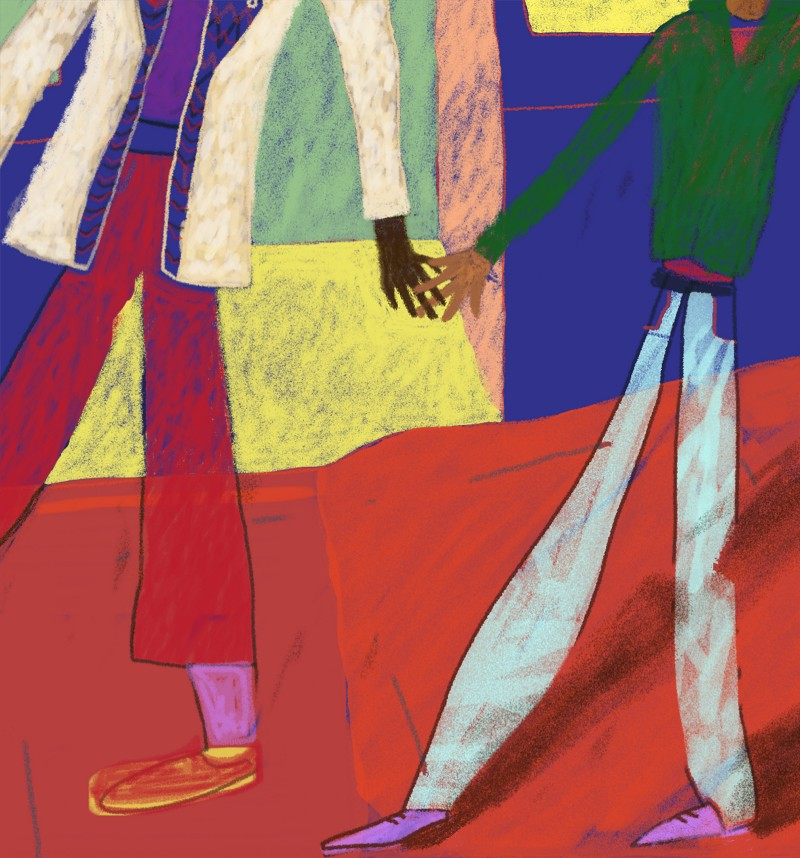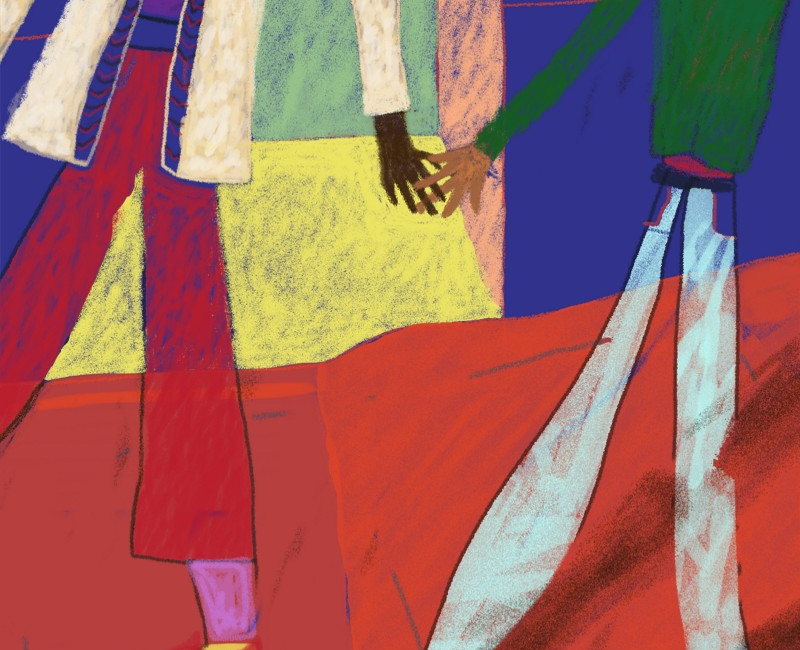
They’re the ones sitting around me on the train. They’re the ones designing advertisements that define which body types are more attractive than others. They’re the screenwriters who use actors to shape the “ideal couple,” who then appear in reality and sit on this same train as me. I see straight people everywhere, and everyone assumes I’m like them, until they realize I’m not.
Then they’re taken aback when I’m in public, holding hands with someone I love. They say I’m living my life wrong. They say yes or no to the school that I’m applying for, to the job that I’m applying for, to the house that I will apply for or to the child that I hope to apply for. And people like me lose out on the equity that heterosexual couples can take for granted.
But I don’t have these privileges. Every time I meet a new acquaintance or friend, I am always weary of mentioning the word “boyfriend,” because I constantly have to come out of the closet every time I introduce myself.
I often imagine what my life would be like as a heterosexual Asian American man. It entails having more privileges, such as shamelessly working out at the gym to bulk up and appear more traditionally “masculine,” or holding hands with my girlfriend in public without having to worry about judgment, or feeling confident enough to ask for a higher starting salary.
But I don’t have these privileges. Every time I meet a new acquaintance or friend, I am always weary of mentioning the word “boyfriend,” because I constantly have to come out of the closet every time I introduce myself.
A fellow gay man once said to me, “You can pass as straight.” As an added caveat, he also mentioned this to be true only if I were seen from afar and if the observer had “malfunctioning gay-dar.” I required some time to process this statement. I began to wonder what it meant to “pass as straight” and what that would that even look like.
Jennie Livingston’s Paris is Burning is a documentary that narrates the ball culture of LGBTQ communities in New York City during the 1980s. The New York Times and the Orlando Sentinel have formerly written about it. The film features mostly non-white LGBTQ people, most of whom were rejected by their families and instead chose to live in houses led by a house mother — a strong parental figure and role model for their house members. Each house would compete at underground balls in performance categories, such as “butch queen,” to see who could do the best drag, or “femme queens,” to see which queer could embody the best “feminine qualities.” Another category included “realness,” to see who could blend in the best as heterosexual.
The reason why many queers are obsessed with embodying stereotypical masculinity is because achieving “realness” is a way to be socially accepted as a human rather than being categorized as a homosexual.
How ironic. Underground balls represented a safe space for queer people to be queer, especially during a generation that was much harder to live queer life openly, yet participants earned extra points for how “real” they could dress as a heterosexual. This category was meant to expose the abuse of heteronormative gender norms on LGBTQ communities, yet there was a perverse sense of closure for queers who won in this category: they knew that they could “pass as a heterosexual” if needed. And the fact that queers feel the need to be corporeally accepted as heterosexuals, since we are never consistently accepted nor welcomed, is ultimately deleterious.
Queer “femme” and Asian men both fall victim to unsavory stereotypes because we struggle to appear “real.” The cultural perception of these qualities makes it more common to see “masculine” white couples — or “masculine” couples in general — because attractiveness among homosexuals has been influenced by heteronormative masculine qualities (e.g., muscular, tall, deep voiced). In turn, it’s a rarity to witness, for example, a tall, skinny Asian man and a short Hispanic man as a couple.
Gay social apps only contribute to this problem. Some users blatantly write “no femmes” or “no Asians” on their profiles as if to filter against queers who deviate from the heteronormative mold of attractiveness. Gays who have the capacity to appear straight or masculine often feed back into this social gender system. I’m not saying this to criticize individuals but rather to criticize the cultural dynamic. The reason why many queers are obsessed with embodying stereotypical masculinity is because achieving “realness” is a way to be socially accepted as a human rather than being categorized as a homosexual.
But I am done giving in to the pressures of a society that fails to accept my identity.
I do not have that luxury because my labels often precede me. I try to be “real” to some extent every day and attempt to adopt and conform to heterosexual behaviors because it’s the only dominant culture for gender I currently see modeled around me. I have been guilty of working out at the gym to accentuate a “masculine” appearance instead of embracing being skinny. And I have been guilty of fighting to find a more “masculine” partner, because it meant that I could attract someone “better” than me.
But I am done giving in to the pressures of a society that fails to accept my identity. I’ve worked hard to increase my self-confidence and love myself more, but it is immensely challenging to continually work against the prevalent cultural and gender norms that influenced my upbringing and my everyday life. I’m over living in a world surrounded by those who define my social gender identity. I’m over trying to blend in with gender norms. I’m over trying to be “real.”







